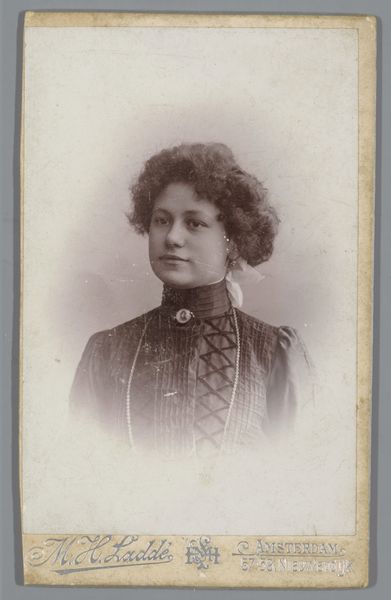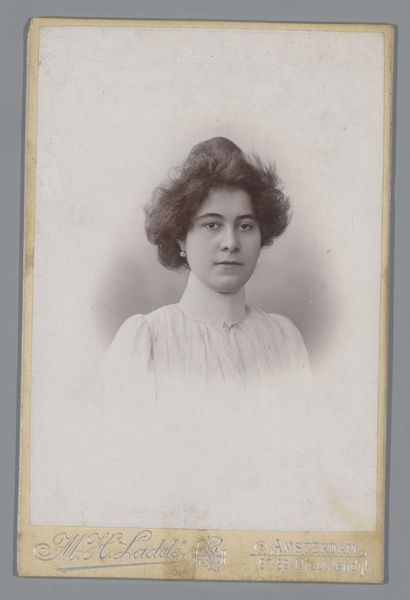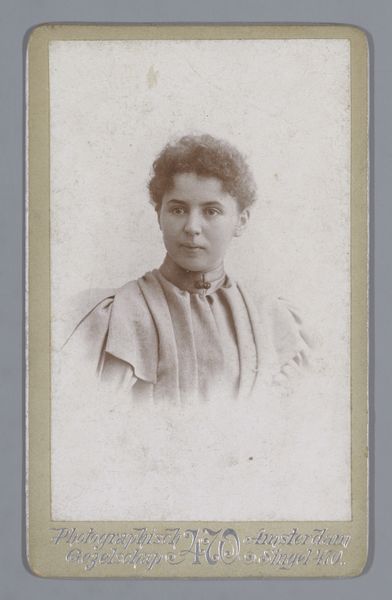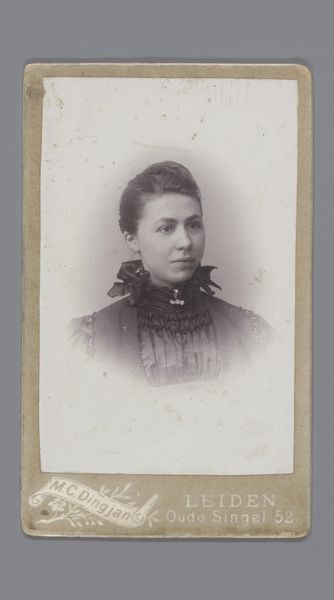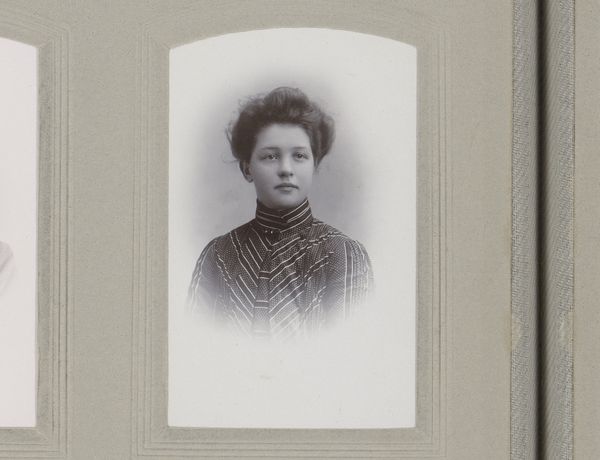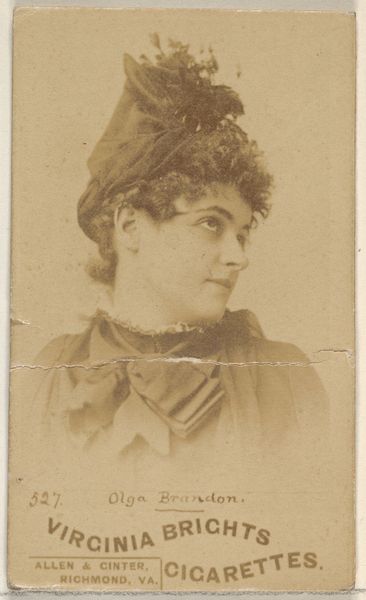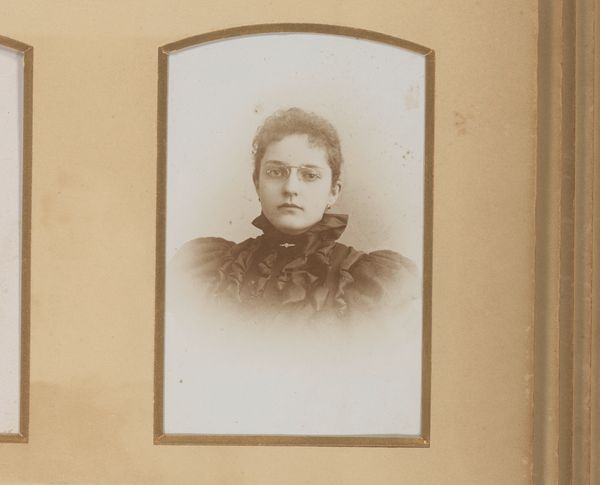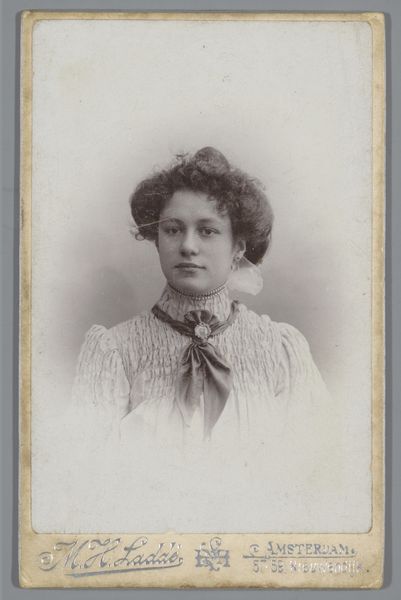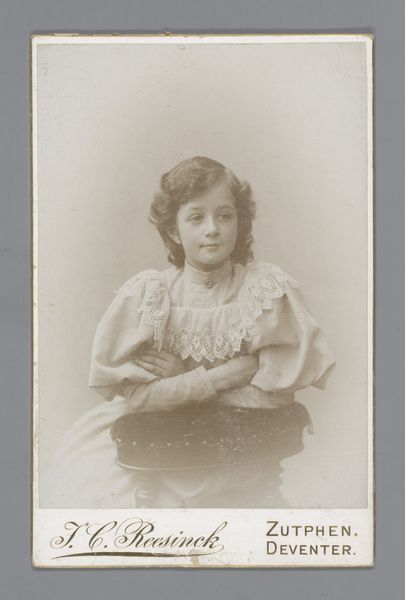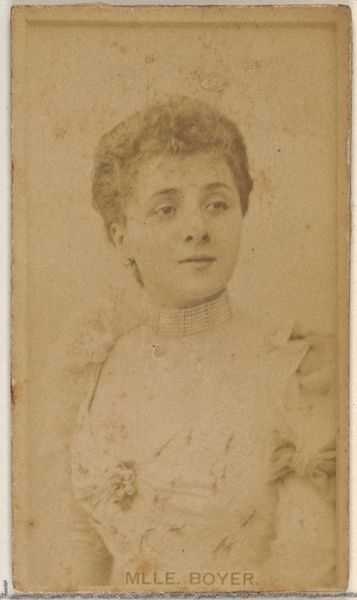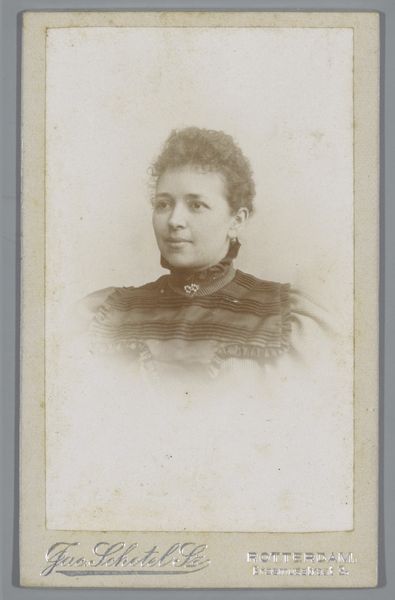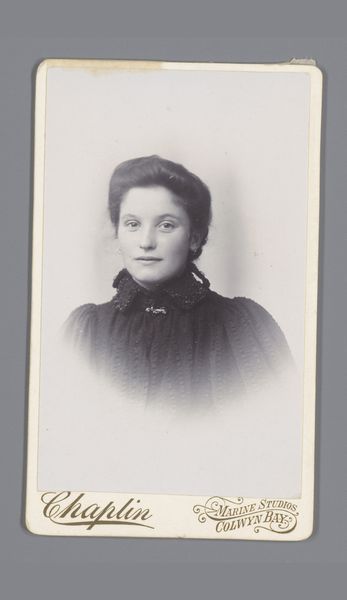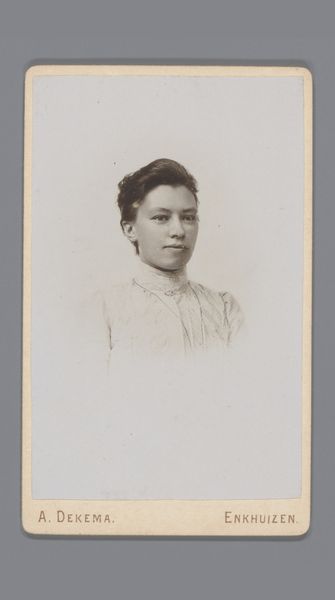
Dimensions: height 105 mm, width 63 mm
Copyright: Rijks Museum: Open Domain
Editor: This is "Portret van een onbekende vrouw," or "Portrait of an Unknown Woman," taken between 1892 and 1906 by Machiel Hendricus Laddé. It's an albumen print. The soft sepia tones create a sense of quiet mystery. What do you see in this piece? Curator: It’s a powerful image precisely because of that anonymity. Think about the act of commissioning a portrait in this era. It's a statement of identity, often class-based. This 'unknown woman' challenges that. Was she working-class, seeking upward mobility through portraiture? Was this a form of proto-feminist self-representation, claiming space without societal labels? The details in her dress, the ruffled collar, even the slightly unfocused gaze, all invite speculation about her social position and internal life. Do you think the framing impacts how we perceive her? Editor: Definitely. The tight framing almost feels like an intrusion, but it also creates a sense of intimacy. I'm wondering about the almost impressionistic effect. Was that common for photography at this time, or was Laddé experimenting? Curator: Precisely! Photography during this period was deeply engaged with questions of representation being explored by Impressionist painters. They were questioning the objectivity of the visual world, influenced by broader cultural anxieties about modernity. Laddé uses the medium's supposed accuracy to almost undermine itself, softening details, creating a mood, suggesting rather than stating. Consider the power dynamics involved: the photographer, the subject, the viewer. Whose gaze are we participating in, and what does that tell us about the era? Editor: That’s fascinating. I never considered the active role photography played in these cultural conversations. It makes you wonder about her story and how she wanted to be seen. Curator: Exactly! And maybe it wasn't about her story, but about reclaiming a narrative for women as a whole. Editor: Thank you. I now appreciate how this "unknown woman" photograph transcends just being a portrait, instead representing profound themes regarding the era and female identity.
Comments
No comments
Be the first to comment and join the conversation on the ultimate creative platform.
